
Electric cars have been around for as long as their gas-guzzling counterparts. But technical limitations such as battery size and efficiency have until recently hampered mass adoption of what is demonstrably a cleaner and more efficient form of fuel-powered transport.
Today, thanks to innovations in how electricity is collected, stored, and discharged, we have recently entered a new era of motorized mobility. Innovations such as high-energy lithium ion battery cells, the development of battery-charging networks, and engineering feats like hybrid drivetrains and regenerative braking, are rapidly making electric vehicles and gas-electric hybrids a new normal. Now, most of the world’s largest automakers either offer eco-friendly electric and hybrid cars or are developing them.
While internal combustion engines will be around for the foreseeable future, fuel economy is climbing thanks to a combination of technological development and regulatory nudges, such as vehicle fuel economy mandates in the United States and European countries, among other nations.
With the new hybrid technologies, today it is possible to own hybrid cars able to drive the equivalent of over 40 miles to the gallon. Fully electric cars fare even better, able to drive the equivalent of over 100 miles on a gallon of gasoline.
While hybrids and electric cars have only been adopted by a small portion of the market, they are growing in popularity. One of the models on this list, the BMW i3 was among the 26 fastest selling cars of 2018.
The following is a list of the most eco-friendly vehicles in the U.S. marketplace for the 2018 model year. All figures come from the U.S. Environmental Protection Agency’s annual review of fuel economy for all passenger vehicles sold in the United States to determine the most fuel-efficient vehicles in the market for the 2018 model year. For electric vehicles, the fuel efficiency figure listed is in MPGe, or miles-per-gallon equivalent, a metric developed by the EPA to translate the fuel economy of vehicles running partially or exclusively on electricity into miles per gallon of gasoline.
In a few cases, multiple versions of a given model have different fuel efficiencies, all of which are high enough to make the list. In those cases, we list only the most fuel-efficient model.
Click here to see America’s most eco-friendly vehicles
Click here to read our methodology
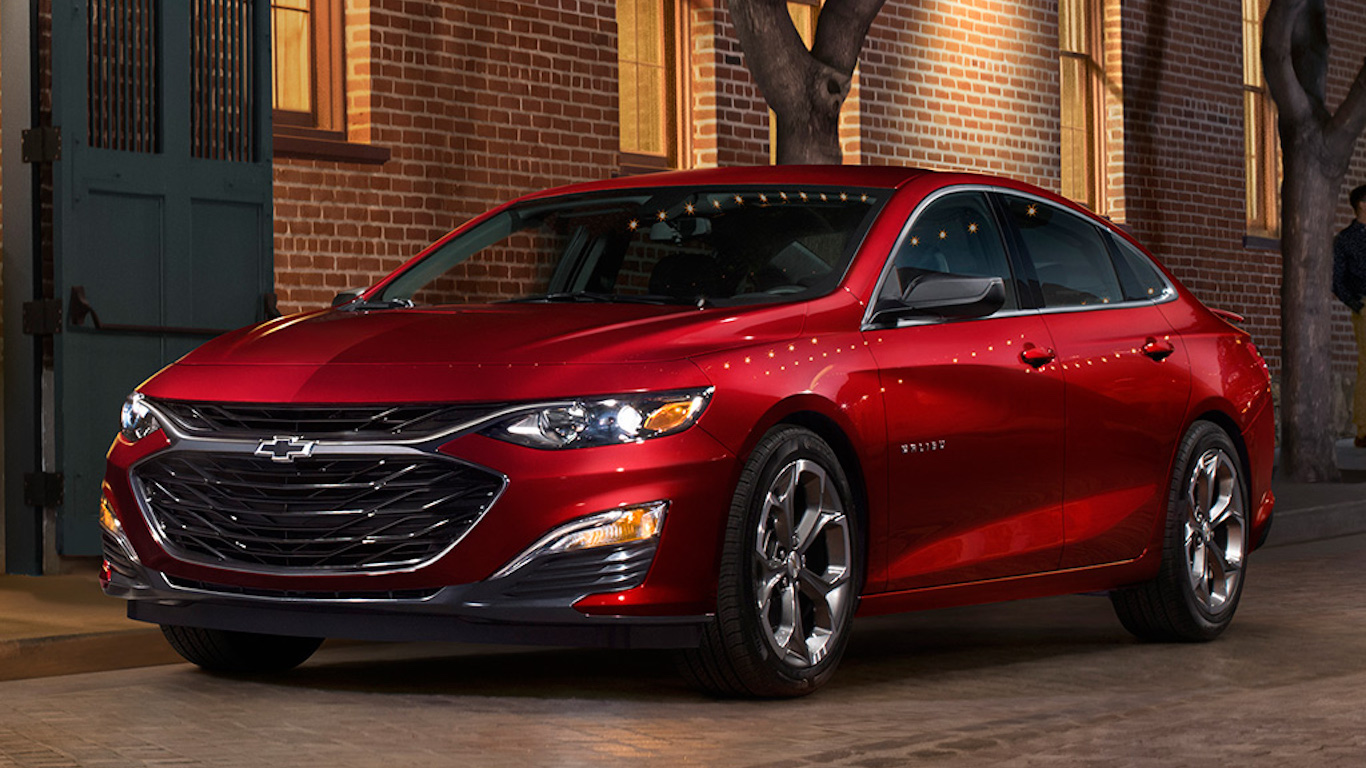
18. Chevrolet Malibu Hybrid
> Fuel (or energy) efficiency: 46 mpg
> Type: Midsize hybrid sedan
> Annual fuel cost: $900
The Chevy Malibu Hybrid is one of two Chevrolet vehicles on this list. Its 80-cell, 1.5kWh lithium-ion battery pack provides extra mileage compared to the 30 mpg non-hybrid version. The Malibu Hybrid can run on battery power alone at speeds of up to 55 mph before the gasoline engine kicks in. The 2019 model costs around $28,000, about $6,000 more than the gasoline only version. The vehicle earns an Excellent rating from Motortrend.
[in-text-ad]

17. Honda Accord Hybrid
> Fuel (or energy) efficiency: 47 mpg
> Type: Large hybrid sedan
> Annual fuel cost: $900
The hybrid version of one of the best selling cars in the United States squeezes out an extra 14 mpg compared to the most efficient non-hybrid Accord. Honda claims that the 2019 Accord Hybrid gets an extra mile per gallon, 48 mpg, compared to the 2018 model. The Accord Hybrid costs about $25,000, or about $2,000 more than the starting price for the non-hybrid version. The Accord Hybrid is one of two Hondas on this list.

16. Kia Niro FE
> Fuel (or energy) efficiency: 50 mpg
> Type: Hybrid crossover
> Annual fuel cost: $850
The $24,400 Kia Niro FE traditional hybrid crossover gets a little more mileage than the slightly fancier Niro LX. An extra $5,000 gets you the plug-in hybrid version that gets less mileage than the FE when the gasoline engine runs solo but an MPGe of 105 when the battery is assisting. For 2019, Kia introduced a fully electric Niro with an MPGe of 112 and a maximum range of 240 miles.
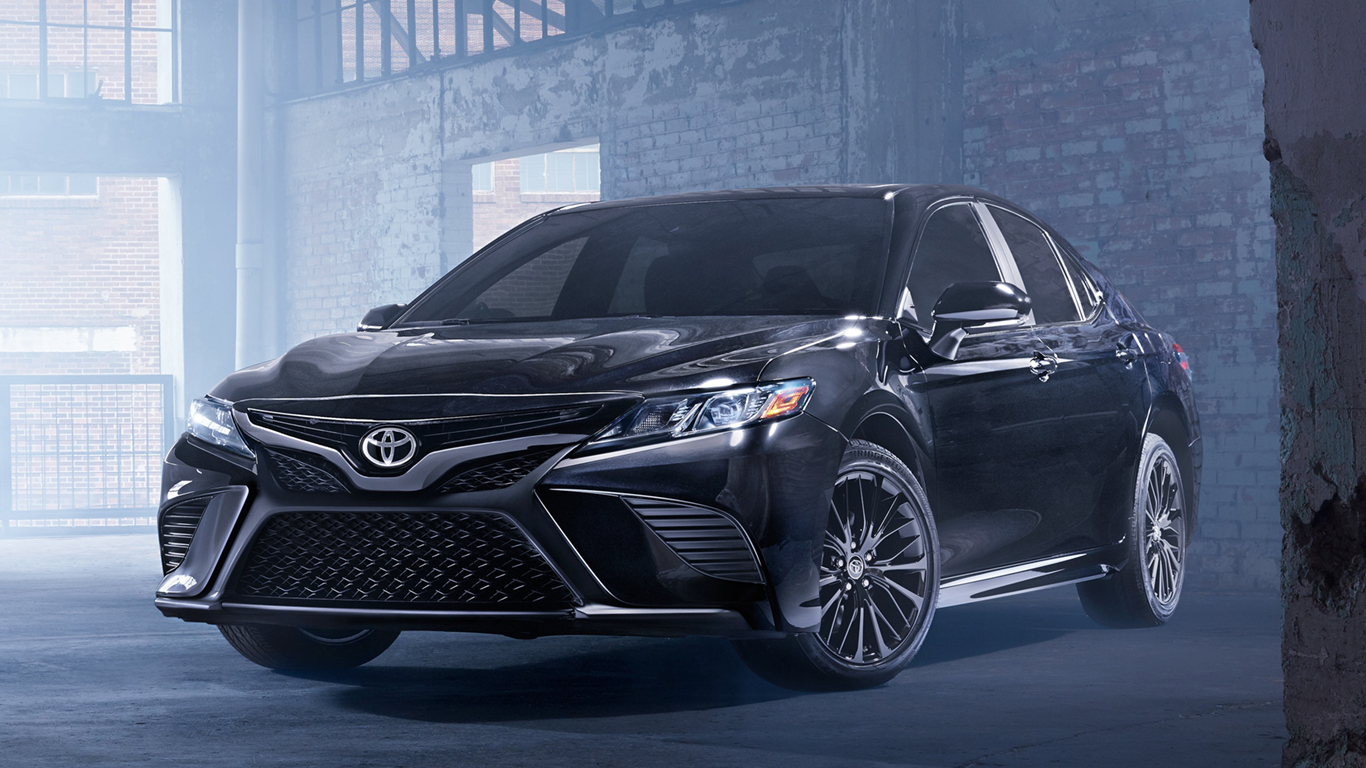
15. Toyota Camry Hybrid LE
> Fuel (or energy) efficiency: 52 mpg
> Type: Midsize hybrid sedan
> Annual fuel cost: $800
The entry-level LE version of the Toyota Camry Hybrid gets 18 miles per gallon more than the most fuel efficient four-cylinder version of the non-hybrid Camry, and it draws out 6 more miles per gallon than the pricier XLE and SE versions of the Camry Hybrid. Though it is pricier and less roomy than the larger Honda Accord Hybrid, at about $28,000 for the 2019 base model, it gets measurably more fuel economy.
[in-text-ad-2]
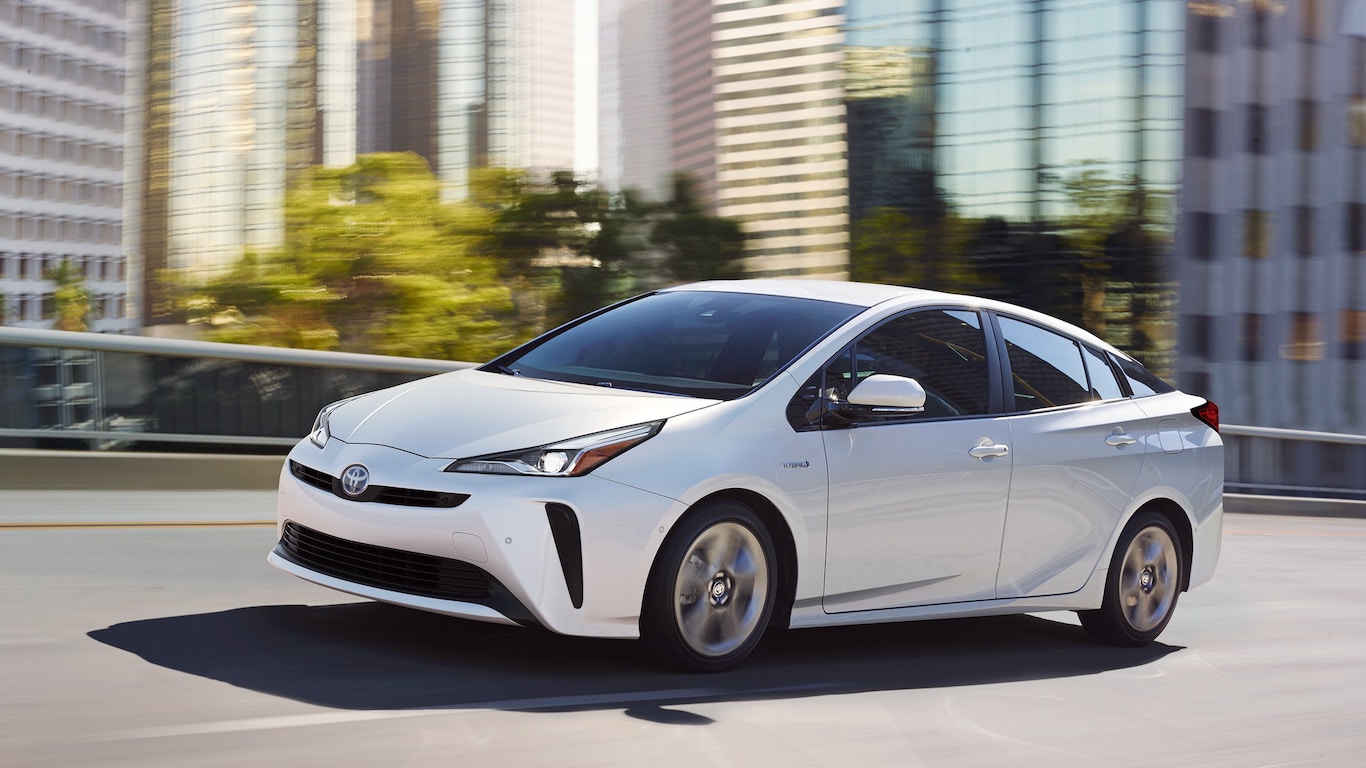
14. Toyota Prius Two Eco
> Fuel (or energy) efficiency: 56 mpg
> Type: Midsize hybrid sedan
> Annual fuel cost: $750
The most fuel efficient version of the Toyota Prius starts at about $25,000 but gets 4 more miles to the gallon (combined city and highway) than the standard Prius that costs about $2,000 less. Toyota also has the Prius Prime, a $28,000 plug-in hybrid that can travel up to 25 miles on battery power alone, giving it an MPGe of 133, but it has a lower mpg than the Prius Two Echo when its battery is not assisting.
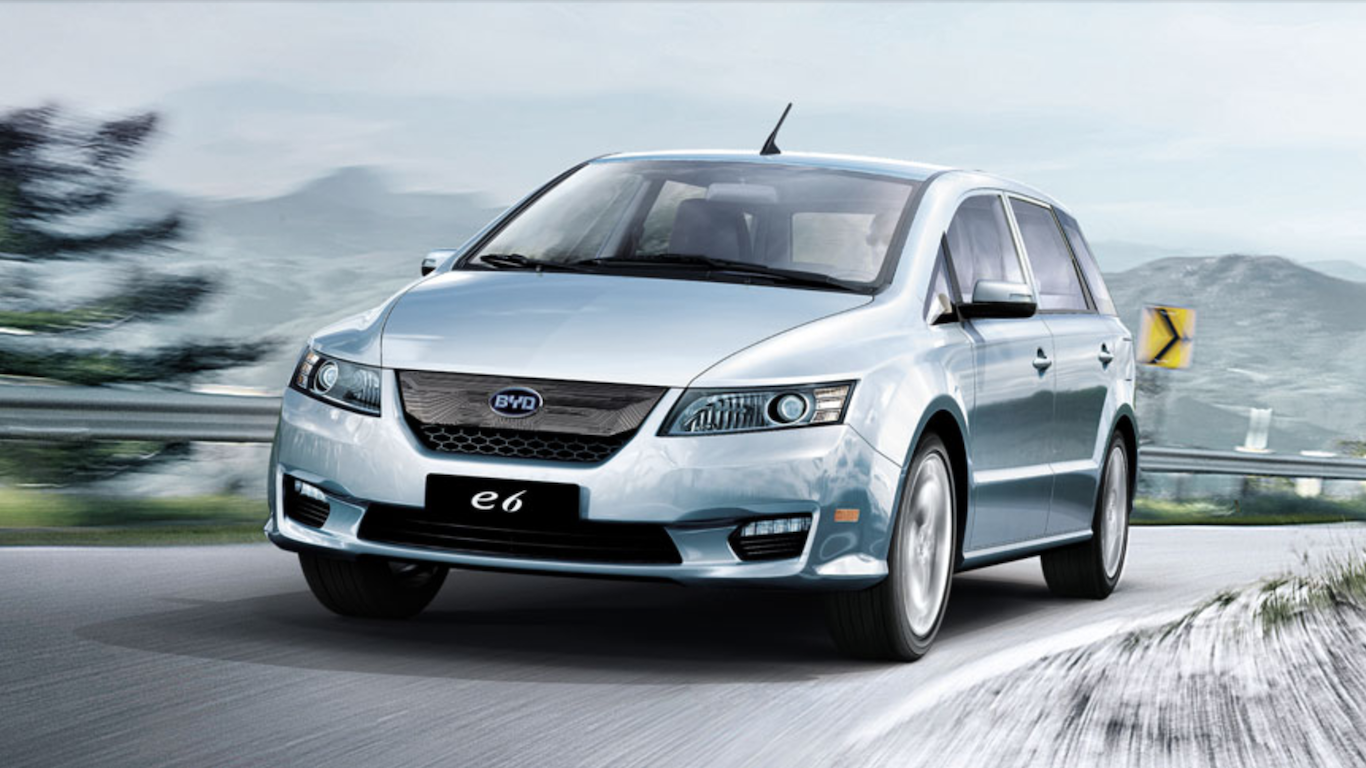
13. BYD e6
> Fuel (or energy) efficiency: 72 MPGe
> Type: Small electric crossover
> Annual fuel cost: $900
The only Chinese-made vehicle on this list has an EPA-verified range of 187 miles per full battery charge. It takes up to 5 hours to fully charge the vehicle’s lithium ion battery pack. BYD, which is primarily known for producing electric car batteries and electric buses, is backed by U.S. business magnate Warren Buffett. BYD is touting the e6 as an ideal ride-sharing vehicle, but the vehicle is rarely seen in the United States.
[in-text-ad]

12. Tesla Model X 75D
> Fuel (or energy) efficiency: 93 MPGe
> Type: Electric midsize SUV
> Annual fuel cost: $700
With a starting price tag of about $83,000 this all-wheel drive 75D with the 75-kWh battery pack (a max distance per charge of 237 miles) is the most fuel efficient version of the Model X. Tesla announced in January it will no longer accept orders for this base model. The new base model is the same vehicle with a 100 kWh battery pack, which has an MPGe of 87 miles but can travel up to 289 miles on a fully charged battery pack.
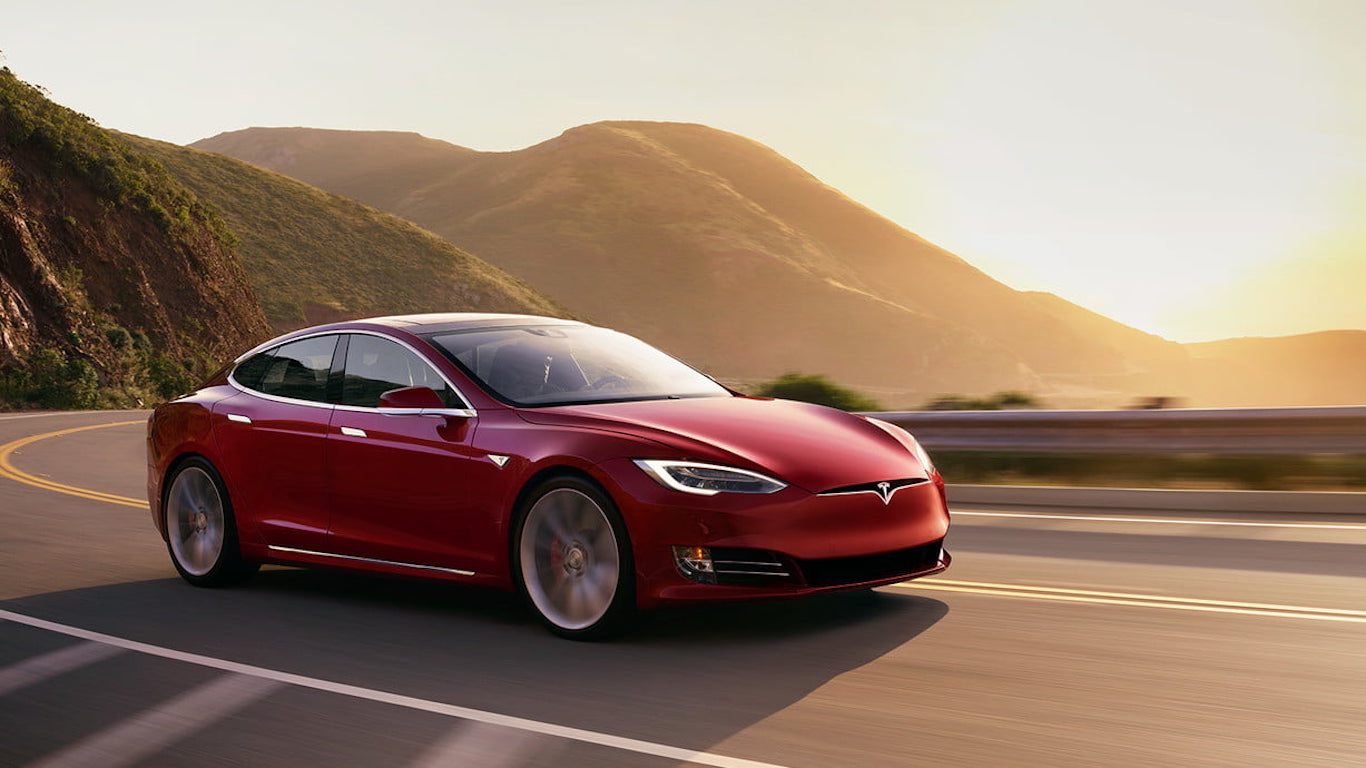
11. Tesla Model S 75D
> Fuel (or energy) efficiency: 103 MPGe
> Type: Fullsize electric sedan
> Annual fuel cost: $650
The Model S with a 75 kWh battery is the most fuel efficient version of Tesla’s electric sedan. But like the Model X, Tesla announced earlier this year it was scrapping the smaller battery pack. The new battery would entail a price jump of the new Model S base price of $18,000 to about $98,000. The 100D gets 102 MPGe and it can travel about 270 miles on a fully charged battery pack compared to 237 miles for the 75D.

10. Ford Focus Electric
> Fuel (or energy) efficiency: 107 MPGe
> Type: Compact electric car
> Annual fuel cost: $600
Ford Motor Company’s push into fully electric vehicles included a battery powered version of its Focus compact. Despite the car’s robust fuel economy rating, it was never very popular in the U.S. or European markets, where consumers have more choices in small fuel efficient vehicles. Ford announced last year it would stop selling five of its six sedans in North America, including the Focus Electric.
[in-text-ad-2]
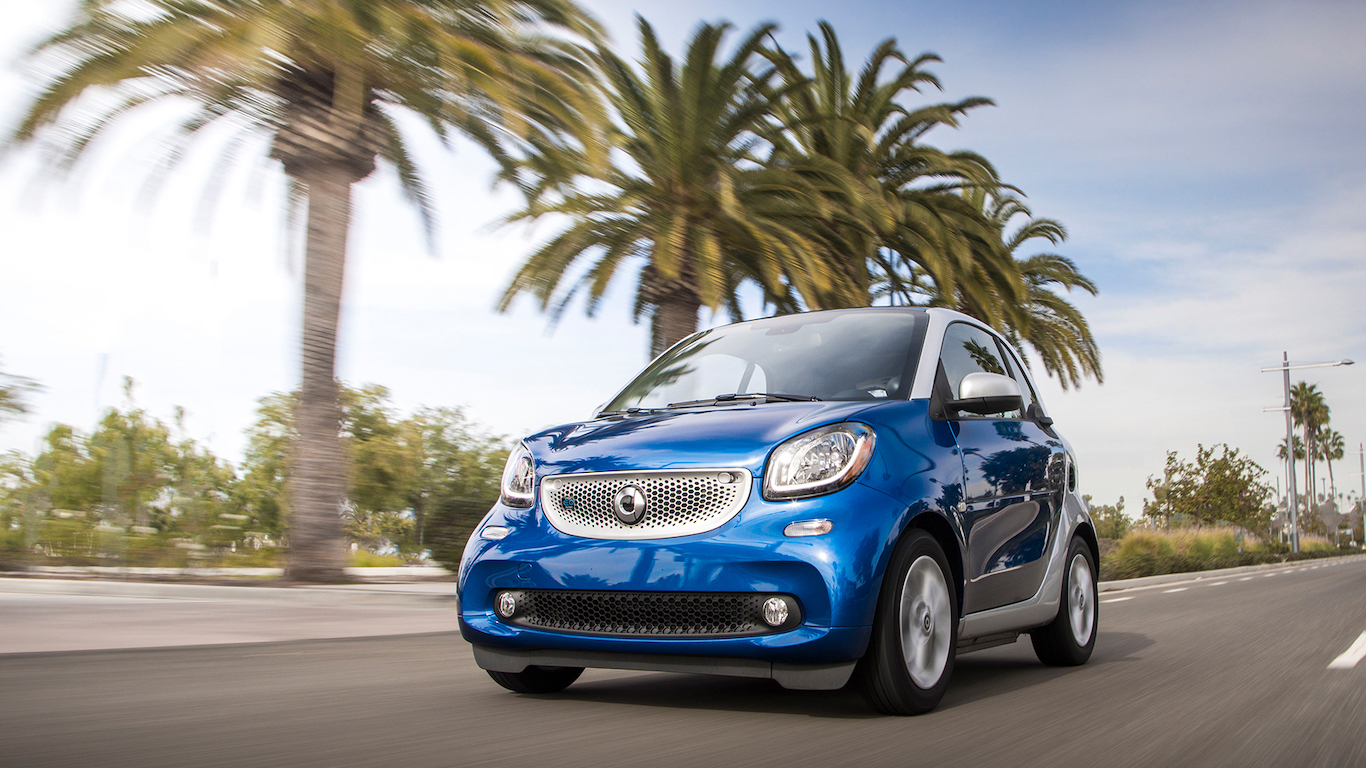
9. Smart Fortwo Electric Drive
> Fuel (or energy) efficiency: 108 MPGe
> Type: Electric two-seat hatchback
> Annual fuel cost: $600
If you live in a big U.S. city you have probably spotted one of these quirky hatchbacks, and it was probably parking in a space in which few other cars could fit. The coupe version of the minicar, which starts at about $24,500, is among the top 10 most eco-friendly vehicles in the U.S. market. In some larger cities, the cars are available as ride-sharing vehicles through car2go, the company owned by German auto giant Daimler — which is also the owner the Smart brand.
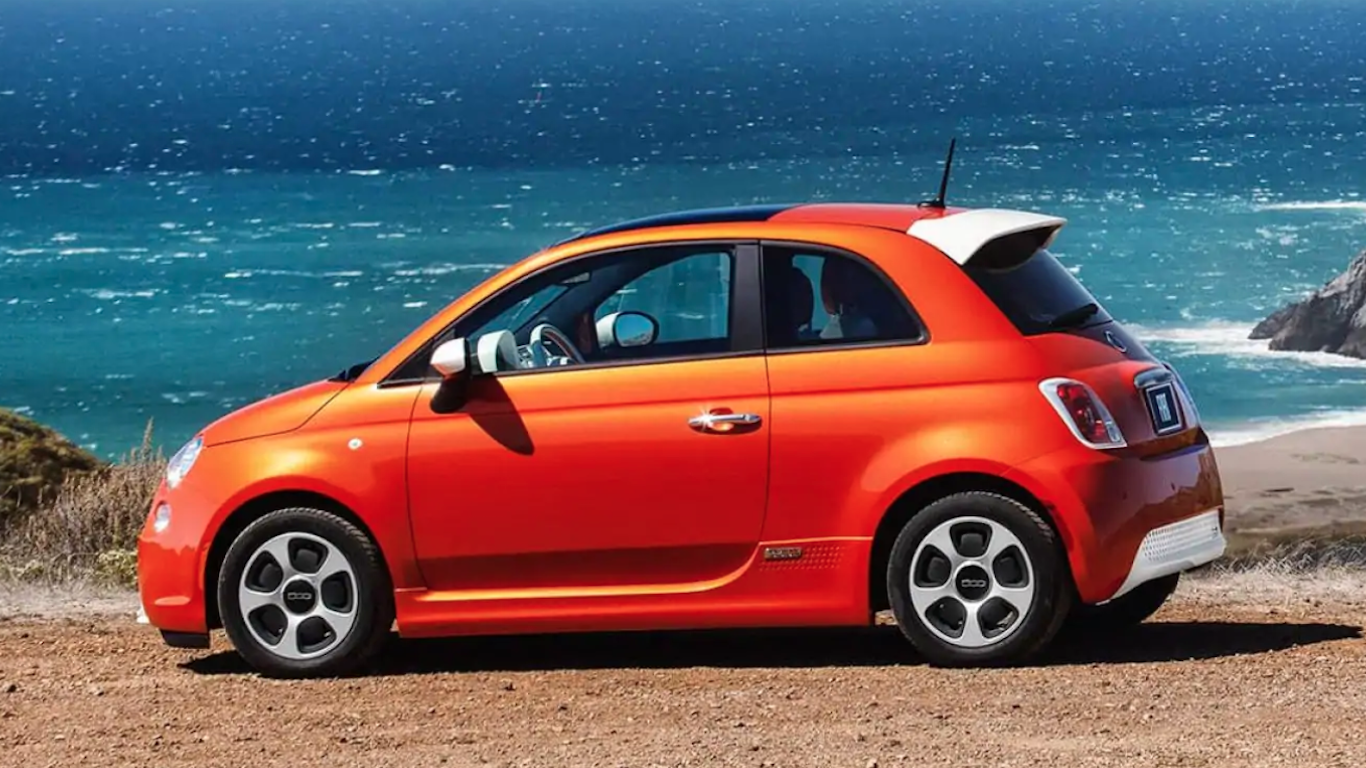
8. Fiat 500e
> Fuel (or energy) efficiency: 112 MPGe
> Type: Electric subcompact car
> Annual fuel cost: $600
Like the Smart Fortwo Electric Drive, the Fiat 500e is pretty much a city-only vehicle, not a car that is conducive to road trips or extensive highway travel. But its tiny size and battery power makes it among the most eco-friendly cars available in the United States. With a price tag of nearly $34,000 and a limiting 84 miles of range on a full battery charge, however, the Fiat 500e may only fit few lifestyles.
[in-text-ad]

7. Nissan Leaf
> Fuel (or energy) efficiency: 112 MPGe
> Type: Electric five door hatchback
> Annual fuel cost: $600
Nissan announced in March it sold 400,000 Leafs worldwide since the car was first introduced in 2010, and that the Leaf is the first electric car to date to reach the milestone. Starting at just under $30,000 (excluding any state or federal green-vehicle tax credits) the Leaf is sold with a 40 kWh or 62 kWh battery, giving 150 miles or 226 miles of range per full charge, respectively.
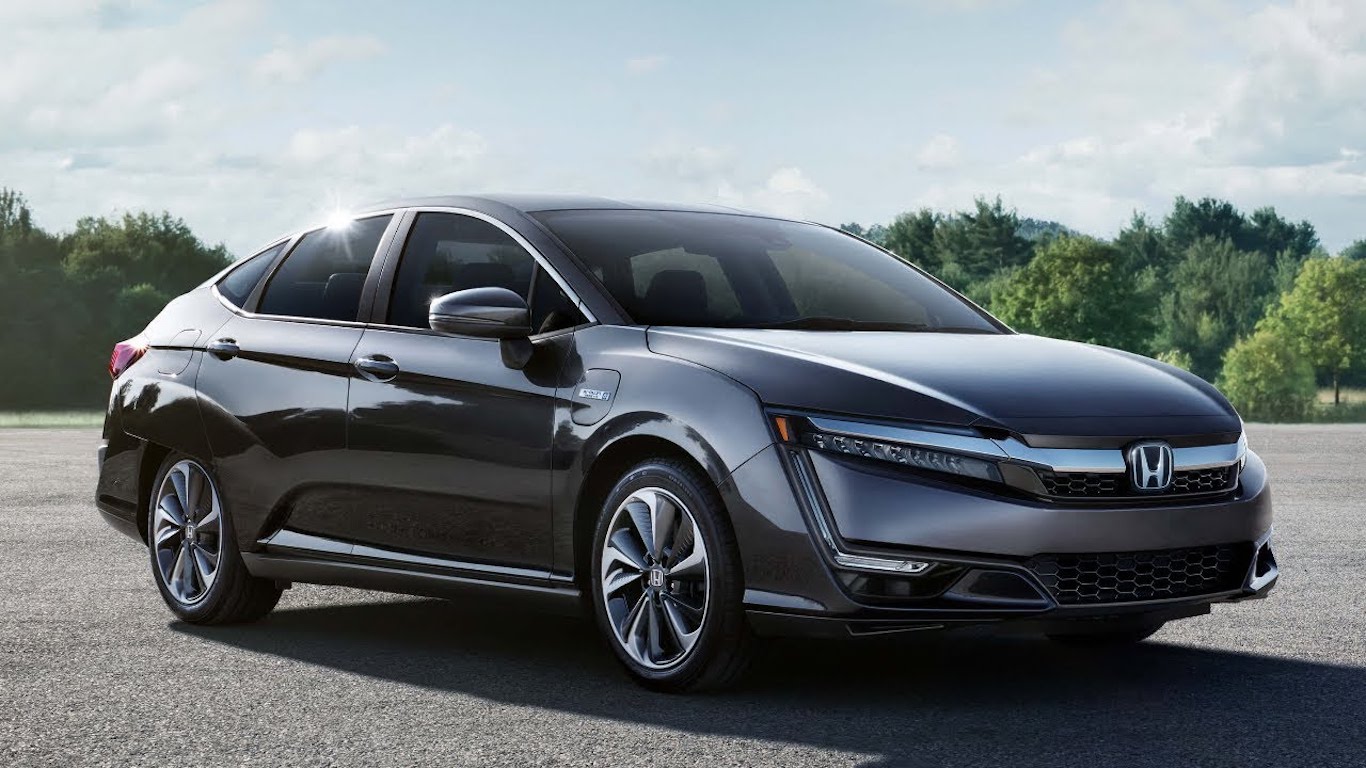
6. Honda Clarity EV
> Fuel (or energy) efficiency: 114 MPGe
> Type: Electric midsize sedan
> Annual fuel cost: $600
With a range of only 89 miles per fully charged battery, the Clarity EV, which costs about $36,600 before any available state and federal tax credits, would work best for small commutes in areas with ample places to charge the battery. Plus, it is only available in Oregon and California. For about $3,000 less, Honda offers a plug-in gas-electric hybrid Clarity with 110 MPGe that can travel up to 47 miles on battery power alone.
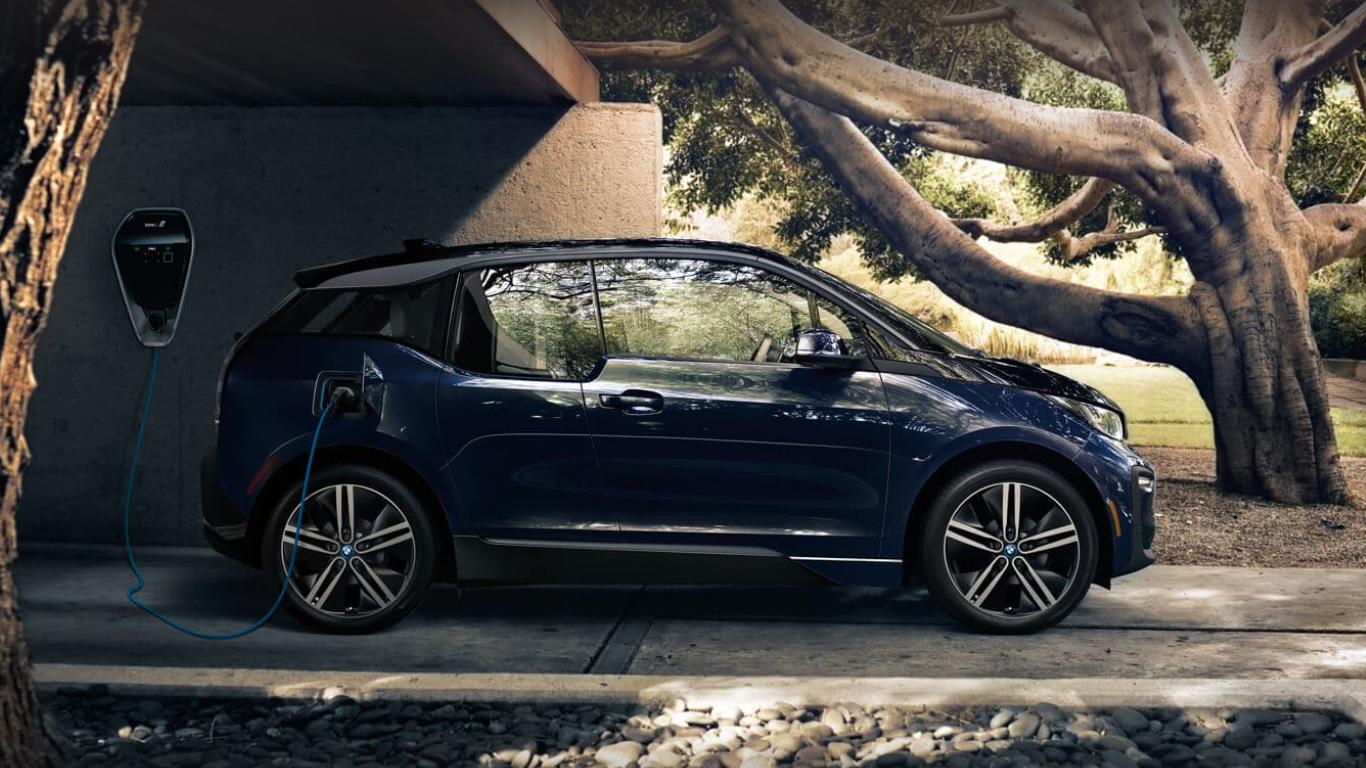
5. BMW i3
> Fuel (or energy) efficiency: 118 MPGe
> Type: Electric subcompact car
> Annual fuel cost: $550
The i3 and its sportier but less fuel efficient i3s may be the most eye-catching of the small electric cars, with their carbon fiber trim and sleek, minimalist interiors. But the i3 also comes with a heftier price tag, about $45,400 before any available state and federal tax credits. It also lags behind comparable cars on this list in how far it can travel on one full battery charge, at just 153 miles.
[in-text-ad-2]

4. Chevrolet Bolt EV
> Fuel (or energy) efficiency: 119 MPGe
> Type: Electric subcompact car
> Annual fuel cost: $550
The Bolt is an unlikely winner for Chevrolet’s parent company, General Motors, which generally relies on its lineup of big SUVs and pickup trucks. The vehicle has received positive reviews for its handling and spaciousness, as well as its 238-mile range on a fully charged battery. Starting at about $36,600 before any available tax credits, the Bolt costs less than the BMW i3 but more than a roomier but less fuel efficient Honda Clarity plug-in hybrid.

3. Volkswagen e-Golf
> Fuel (or energy) efficiency: 119 MPGe
> Type: Electric compact car
> Annual fuel cost: $550
Car & Driver magazine described the e-Golf as a “handsome little package” that has all of the pep of the regular Volkswagen Golf. The $32,800 electric car sits right about in the middle of the price range for small electric cars, and like other green vehicles qualifies for tax credits. But the e-Golf lags on driving range compared to comparable models like the Chevrolet Bolt and Tesla Model 3 at just 125 miles.
[in-text-ad]

2. Tesla Model 3 Long Range
> Fuel (or energy) efficiency: 130 MPGe
> Type: Electric midsize sedan
> Annual fuel cost: $500
The Tesla Model 3 did not turn out to be the $35,000 Tesla for the masses that company co-founder Elon Musk initially promised. Still, starting at about $39,500 before any available tax credits, the Model 3 is currently the lowest priced new Tesla. However, buyers have to drop another $10,000 on top of the base price for the long-range battery to reach 130 MPGe and an industry-leading range of 325 miles per full battery charge.
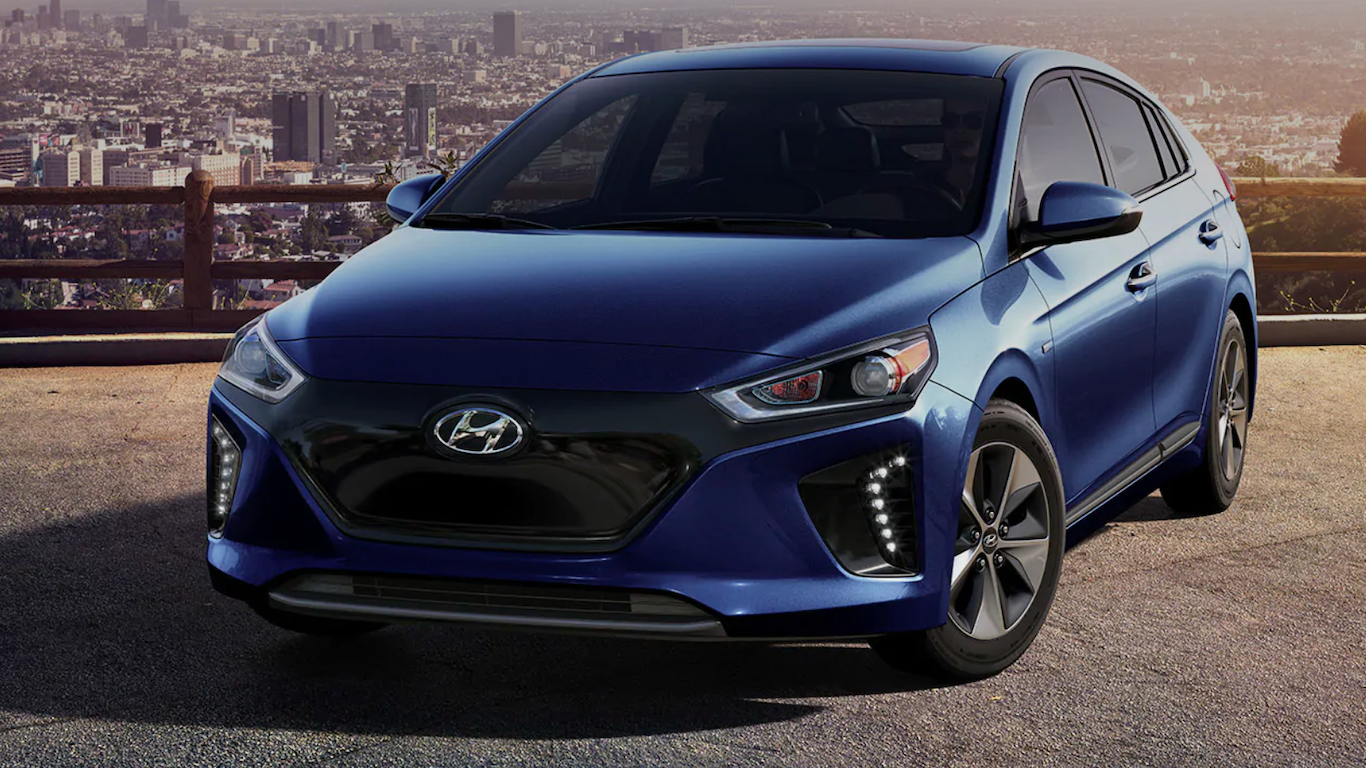
1. Hyundai Ioniq Electric
> Fuel (or energy) efficiency: 136 MPGe
> Type: Midsize electric vehicle
> Annual fuel cost: $500
The fully electric version of the Hyundai Ioniq led the pack in the 2018 model year with a whopping 136 MPGe. Starting at $30,700 it is also toward the lower end of the electric-car price scale. The Ioniq, however, has an unremarkable maximum 124-mile range. Cost-conscious buyers might be better off sacrificing some fuel economy for the lower-cost Ioniq plug-in hybrid that can travel up to 29 miles on battery power alone.
Methodology
24/7 Wall St. pored through the U.S. Environmental Protection Agency’s annual review of fuel economy for all passenger vehicles sold in the United States to determine the most fuel-efficient vehicles in the market for the 2018 model year.
All of the vehicles on this list earned the EPA’s top ranking of “10” for being the most fuel efficient relative to other vehicles available in the market. For electric vehicles, we included only those with an MPGe of more than 70 miles to the gallon. MPGe, or miles-per-gallon equivalent, is a metric developed by the EPA to translate the fuel economy of vehicles running partially or exclusively on electricity into miles per gallon of gasoline. This provides consumers with an apples-to-apples comparison between electric-powered vehicles and their gas-burning equivalents.
Unlike conventional hybrid cars, which use batteries that reclaim energy from braking and coasting, plug-in hybrid vehicles use a rechargeable battery that can be plugged into a recharging station. These plug-in hybrid electric vehicles (PHEVs) can travel for short distances on battery power before the gasoline engine is activated. Because of this quality, PHEVs have both an MPGe and mpg rating. To determine the ranking of a PHEV, we deferred to the vehicle’s mpg rating, assuming most PHEV drivers will typically travel distances beyond what the on-board battery can provide.
Both mpg and MPGe ratings on this list assume 55% city driving and 45% highway driving.
Get Ready To Retire (Sponsored)
Start by taking a quick retirement quiz from SmartAsset that will match you with up to 3 financial advisors that serve your area and beyond in 5 minutes, or less.
Each advisor has been vetted by SmartAsset and is held to a fiduciary standard to act in your best interests.
Here’s how it works:
1. Answer SmartAsset advisor match quiz
2. Review your pre-screened matches at your leisure. Check out the advisors’ profiles.
3. Speak with advisors at no cost to you. Have an introductory call on the phone or introduction in person and choose whom to work with in the future
Get started right here.
Thank you for reading! Have some feedback for us?
Contact the 24/7 Wall St. editorial team.
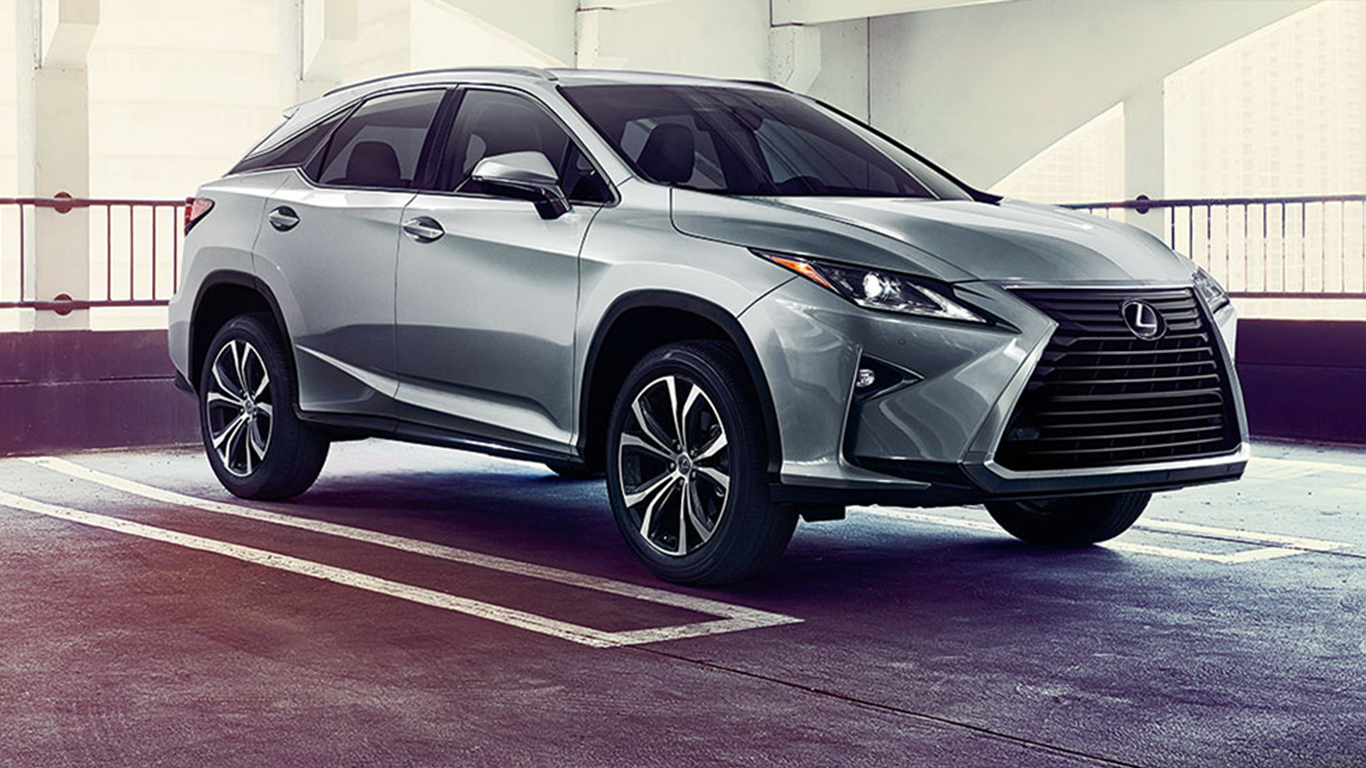 24/7 Wall St.
24/7 Wall St. 24/7 Wall St.
24/7 Wall St.


